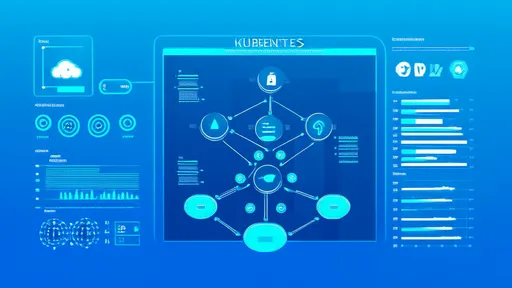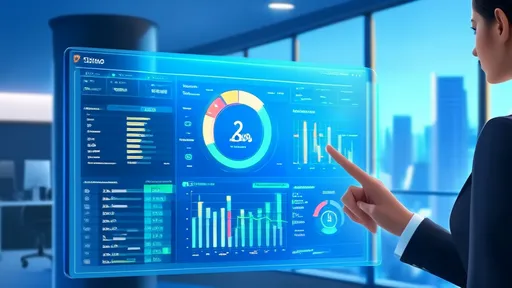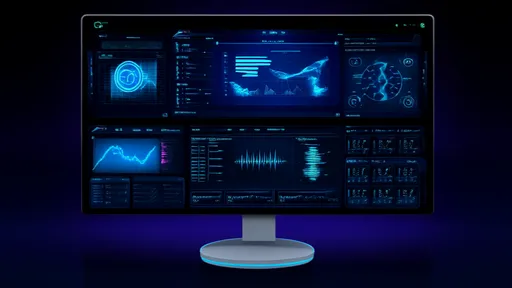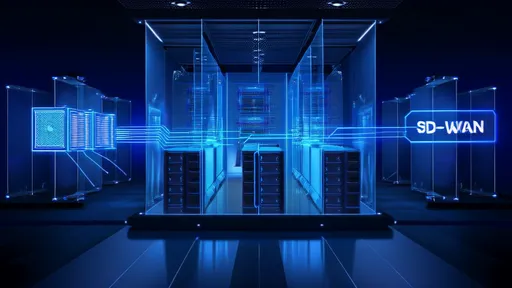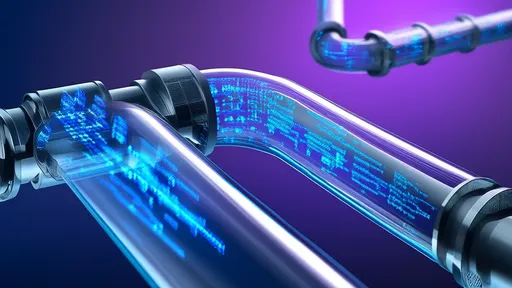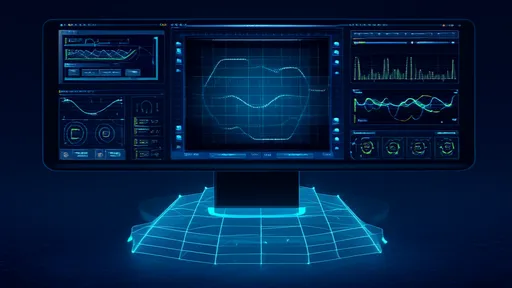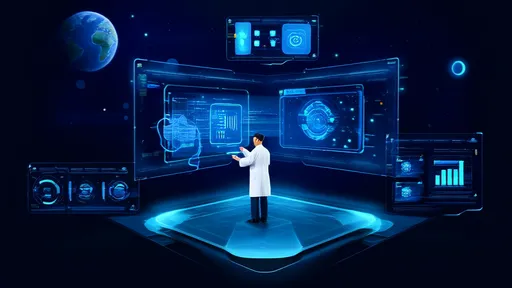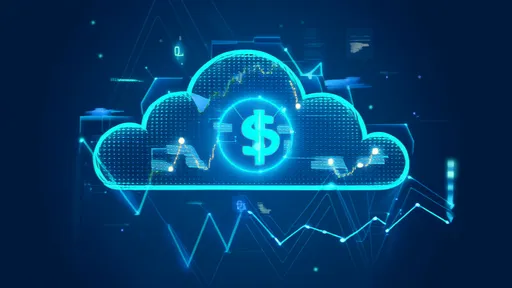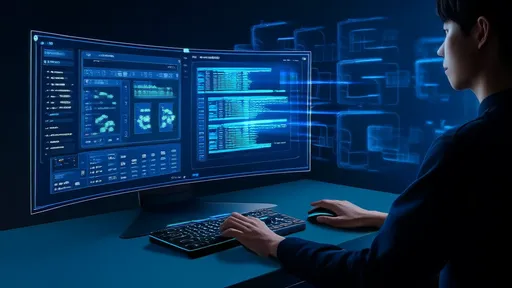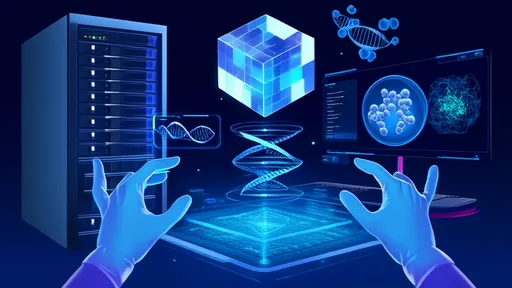The landscape of software development has undergone a seismic shift with the proliferation of cloud-native architectures. As organizations race to deliver applications faster and more reliably through CI/CD pipelines, a critical challenge has emerged: security. The traditional approach of bolting on security measures at the end of the development cycle is no longer tenable. It creates bottlenecks, delays releases, and often results in vulnerabilities being discovered too late, when remediation is most costly and disruptive. In response, a transformative strategy known as "shifting left" has gained significant traction, fundamentally rethinking how and when security is integrated into the software development lifecycle.
Shifting security left means embedding security practices and tools directly into the earliest stages of the CI/CD pipeline. Instead of being a separate phase handled by a isolated team, security becomes an integral, automated part of the developer's workflow. This proactive stance ensures that code is continuously scanned for vulnerabilities, misconfigurations, and compliance issues from the moment it is written. The goal is not to slow down development but to empower developers to build secure software by default, catching and fixing issues when they are cheapest and easiest to address. This cultural and technical evolution is pivotal for building resilient cloud-native applications.
The CI/CD pipeline itself provides the perfect automation framework for this embedded security strategy. It begins with the code commit. When a developer pushes code to a repository, automated triggers can initiate a series of security scans. Static Application Security Testing (SAST) tools analyze the source code for common vulnerabilities like SQL injection or cross-site scripting without executing the program. These tools provide immediate feedback to the developer, often directly within their integrated development environment (IDE) or pull request interface. This immediate loop allows for instant remediation, fostering a sense of ownership and responsibility for security within the development team itself.
Following the initial code analysis, the next phase involves building the application into container images. This stage is particularly crucial in a cloud-native world, where containers are the fundamental building blocks. Security shifts left here by scanning these newly built container images for known vulnerabilities in their underlying operating systems and software dependencies. Tools integrate with the pipeline to compare the image against continuously updated databases of Common Vulnerabilities and Exposures (CVEs). Policies can be set to automatically fail a build if critical vulnerabilities are detected, preventing vulnerable images from ever progressing to the next stage. This enforced gating is a powerful mechanism for maintaining a strong security posture.
As the pipeline progresses into deployment configuration, Infrastructure as Code (IaC) files like Terraform or Kubernetes manifests come into play. These files define the environment where the application will run, and misconfigurations are a leading cause of cloud security breaches. Embedding security scanning for these IaC files is a critical left-shift practice. Scanners can analyze the configurations for compliance with best practices and organizational policies, flagging issues such as overly permissive security groups, containers running with root privileges, or exposed sensitive data. Catching these issues in the pipeline, before they are ever deployed to a live environment, eliminates entire classes of potential runtime threats.
The final pre-deployment stage often involves dynamic analysis. While SAST looks at code at rest, Dynamic Application Security Testing (DAST) tools test a running instance of the application, typically deployed in a staging environment. They simulate attacks to identify vulnerabilities that only manifest during execution. By integrating DAST into the CI/CD pipeline, these tests are run automatically on every build, providing a comprehensive view of the application's security posture before it reaches production. This automated, continuous testing is a far cry from the manual, periodic penetration tests of the past, offering consistent and reliable security validation.
Adopting a shift-left security model is not merely a technological change; it requires a profound cultural shift within the organization. Development, operations, and security teams—traditionally siloed—must converge towards a DevSecOps model. This requires breaking down barriers and fostering collaboration. Security teams must transition from being gatekeepers who say "no" to being enablers who provide developers with the tools, training, and guardrails to build securely. Developers, in turn, must embrace a expanded responsibility that includes security, understanding that writing secure code is as important as writing functional code.
The benefits of this approach are substantial and multifaceted. The most immediate impact is a significant reduction in vulnerabilities that make it to production. By identifying and remediating issues early, organizations drastically cut the cost and time associated with fixing bugs later in the lifecycle. This leads to a faster time-to-market for new features, as security ceases to be a last-minute hurdle. Furthermore, it cultivates a stronger overall security culture, reduces the burden on dedicated security teams, and enhances compliance by providing automated, auditable evidence of security checks throughout the development process.
In conclusion, the mandate for cloud-native security is clear: it must be continuous, automated, and integrated. Embedding security directly into the CI/CD pipeline represents the most effective strategy for achieving this. By shifting left, organizations move security from a reactive, costly afterthought to a proactive, intrinsic property of the software they build. This evolution is essential for any business serious about thriving in the modern digital ecosystem, where the speed of innovation must be matched by an unwavering commitment to security and resilience.
In today's rapidly evolving cybersecurity landscape, organizations face increasingly sophisticated threats that traditional perimeter-based defenses struggle to contain. The concept of microsegmentation has emerged as a critical component of zero trust architecture, fundamentally transforming how enterprises protect their digital assets. Unlike conventional security approaches that focus on building strong outer walls, microsegmentation operates on the principle that no entity—whether inside or outside the network—should be automatically trusted.
In the ever-evolving landscape of container orchestration, Kubernetes has firmly established itself as the de facto standard for managing containerized applications at scale. One of its most powerful features is the ability to automatically scale applications in response to fluctuating demand, ensuring optimal performance while controlling costs. However, implementing an effective autoscaling strategy requires more than just enabling the feature; it demands a thoughtful approach grounded in proven best practices.
In today's digital landscape, cloud computing has become the backbone of modern business operations, offering unparalleled scalability and flexibility. However, this convenience comes at a cost—literally. As organizations increasingly migrate to the cloud, managing and controlling cloud expenditures has emerged as a critical challenge. Many companies find themselves grappling with unexpected bills, wasted resources, and a lack of visibility into where their cloud dollars are going. This is where FinOps, a cultural practice and operational framework, steps in to bring financial accountability to the world of cloud spending.
The cybersecurity landscape continues to evolve at a breakneck pace, with containerization sitting squarely at the heart of modern application development. As organizations increasingly deploy applications using technologies like Docker and Kubernetes, the security of the underlying container images has become a paramount concern. This has spurred the development and maturation of a robust market for container image vulnerability scanning tools, each promising to fortify the software supply chain. A comprehensive evaluation of these tools reveals a complex ecosystem where capabilities, integration depth, and operational efficiency vary significantly.
As enterprises continue their digital transformation journeys, the debate between SD-WAN and SASE for hybrid cloud connectivity has become increasingly prominent. These two technologies represent different generations of networking solutions, each with distinct approaches to addressing the complex challenges of modern distributed architectures. While SD-WAN emerged as a revolutionary improvement over traditional MPLS networks, SASE represents a more comprehensive framework that integrates networking and security into a unified cloud-native service.
The evolution of cloud-native databases has entered a new phase with the rise of serverless architectures. What began as a shift from on-premise data centers to cloud-hosted instances has now matured into a more dynamic, cost-efficient, and scalable paradigm. The serverless model represents a fundamental rethinking of how databases are provisioned, managed, and utilized, moving away from static resource allocation toward an on-demand, pay-per-use approach. This transformation is not merely a technical upgrade but a strategic enabler for businesses aiming to thrive in an unpredictable, data-intensive landscape.
In the rapidly evolving landscape of cloud-native computing, the demand for robust observability has never been more critical. As organizations migrate to dynamic, distributed architectures, traditional monitoring tools often fall short in providing the depth and real-time insights required to maintain system reliability and performance. Enter eBPF—extended Berkeley Packet Filter—a revolutionary technology that is redefining how we achieve observability in cloud-native environments. Originally designed for network packet filtering, eBPF has evolved into a powerful kernel-level tool that enables developers and operators to gain unprecedented visibility into their systems without modifying application code or restarting processes.
The landscape of enterprise IT has undergone a seismic shift with the widespread adoption of multi-cloud and hybrid cloud strategies. While this approach offers unparalleled flexibility, cost optimization, and avoids vendor lock-in, it introduces a formidable layer of complexity. At the heart of this complexity lies the significant challenge of managing compatibility across disparate cloud environments. Cross-cloud management platforms have emerged as the central nervous system for this new reality, but their effectiveness is directly tied to their ability to navigate a labyrinth of compatibility issues.
The economic implications of serverless computing have become a central topic in cloud architecture discussions, shifting the conversation from pure technical implementation to strategic financial optimization. As organizations increasingly adopt Function-as-a-Service (FaaS) platforms, understanding the nuanced cost structures and optimization opportunities has become critical for maintaining competitive advantage while controlling cloud expenditures.
The landscape of software development has undergone a seismic shift with the proliferation of cloud-native architectures. As organizations race to deliver applications faster and more reliably through CI/CD pipelines, a critical challenge has emerged: security. The traditional approach of bolting on security measures at the end of the development cycle is no longer tenable. It creates bottlenecks, delays releases, and often results in vulnerabilities being discovered too late, when remediation is most costly and disruptive. In response, a transformative strategy known as "shifting left" has gained significant traction, fundamentally rethinking how and when security is integrated into the software development lifecycle.
The landscape of software testing is undergoing a profound transformation, driven by the relentless integration of artificial intelligence. One of the most impactful and rapidly evolving applications of AI in this domain is the automation of test case generation. This is not merely an incremental improvement to existing processes; it represents a fundamental shift in how development teams approach quality assurance, promising to accelerate release cycles while simultaneously enhancing the robustness and coverage of testing regimens.
In the ever-evolving landscape of artificial intelligence, voice generation technology has emerged as one of the most captivating and, at times, unsettling advancements. The ability to clone and generate highly realistic human voices is no longer confined to the realms of science fiction; it is a present-day reality with profound implications. This technology, often referred to as voice cloning or neural voice synthesis, leverages deep learning models to analyze, replicate, and generate speech that is indistinguishable from that of a real person. The process begins with the collection of a sample of the target voice, which can be as short as a few seconds or as long as several hours, depending on the desired fidelity and the complexity of the model being used.
The semiconductor industry stands at an inflection point where traditional chip design methodologies are increasingly strained by the complexity of modern architectures. As Moore's Law continues its relentless march, the once-manual processes of floorplanning and routing have become prohibitively time-consuming and error-prone. In this challenging landscape, reinforcement learning has emerged not merely as an experimental approach but as a transformative force in automating and optimizing chip layout.
In laboratories and research institutions across the globe, a quiet revolution is underway as artificial intelligence becomes an indispensable partner in scientific discovery. What was once the domain of human intuition, years of trial and error, and painstaking data analysis is now being accelerated at an unprecedented pace by machine learning algorithms and computational power. This transformation is not about replacing scientists but empowering them to ask bigger questions and uncover deeper truths about our universe.
In the ever-evolving landscape of artificial intelligence, a quiet revolution is taking place that promises to fundamentally reshape how machines understand the world. For decades, the field has been dominated by correlation-based approaches—powerful pattern recognition systems that excel at finding statistical relationships in data but fall painfully short when it comes to true understanding. The emerging discipline of causal machine learning seeks to change this paradigm, moving beyond mere correlations to uncover the actual mechanisms that drive phenomena in the real world.

